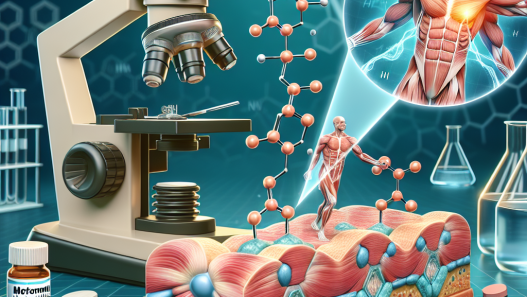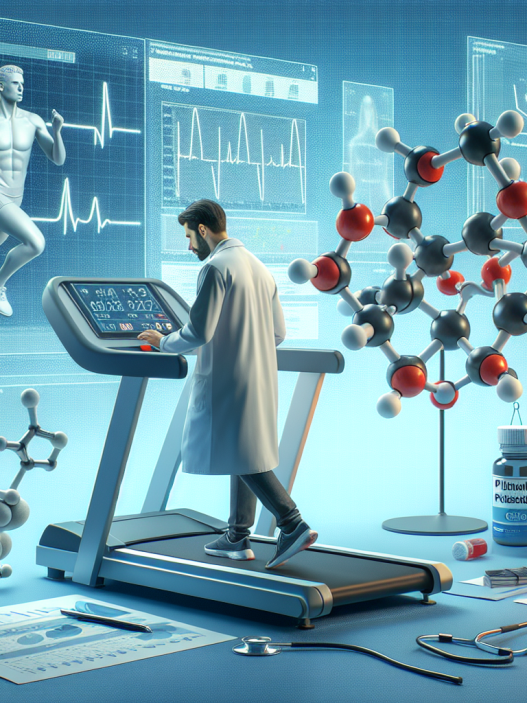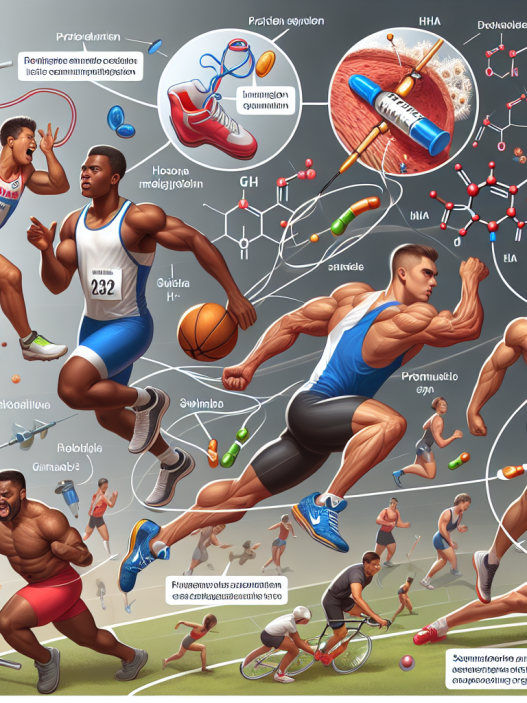-
Table of Contents
- Cholesterol and Cardiovascular Health in Sports: An Integrated Approach
- The Impact of Cholesterol on Athletic Performance
- The Role of Exercise in Managing Cholesterol Levels
- The Role of Nutrition in Managing Cholesterol Levels
- The Role of Medications in Managing Cholesterol Levels
- An Integrated Approach to Managing Cholesterol Levels in Sports
- Real-World Examples
- Conclusion
- Expert Comments
- References
Cholesterol and Cardiovascular Health in Sports: An Integrated Approach
Cholesterol is a vital component of our body’s cells and is essential for the production of hormones, vitamin D, and bile acids. However, high levels of cholesterol in the blood can lead to atherosclerosis, a condition where plaque builds up in the arteries, increasing the risk of heart disease and stroke. In the world of sports, maintaining optimal cholesterol levels is crucial for athletes to perform at their best and avoid potential health risks. In this article, we will explore the relationship between cholesterol and cardiovascular health in sports and discuss an integrated approach to managing cholesterol levels.
The Impact of Cholesterol on Athletic Performance
Cholesterol plays a significant role in athletic performance, as it is a key component of cell membranes and is involved in the production of energy. Low levels of cholesterol can lead to fatigue and decreased endurance, while high levels can impair blood flow and oxygen delivery to muscles, resulting in reduced performance. Additionally, high cholesterol levels have been linked to an increased risk of muscle injuries and delayed recovery time (Mora et al. 2013).
Furthermore, cholesterol is a precursor to testosterone, a hormone that is essential for muscle growth and strength. Low levels of cholesterol can lead to decreased testosterone production, which can negatively impact athletic performance and recovery (Volek et al. 2016). Therefore, maintaining optimal cholesterol levels is crucial for athletes to perform at their best and avoid potential health risks.
The Role of Exercise in Managing Cholesterol Levels
Regular physical activity has been shown to have a positive impact on cholesterol levels. Exercise can increase the levels of high-density lipoprotein (HDL) cholesterol, also known as “good” cholesterol, which helps remove excess cholesterol from the blood and prevents plaque buildup in the arteries (Kokkinos 2019). Additionally, exercise can also decrease the levels of low-density lipoprotein (LDL) cholesterol, also known as “bad” cholesterol, which is responsible for plaque formation in the arteries (Kokkinos 2019).
Moreover, exercise has been shown to improve the function of the endothelium, the inner lining of blood vessels, which plays a crucial role in regulating blood flow and preventing atherosclerosis (Kokkinos 2019). Regular physical activity can also help with weight management, which is essential for maintaining healthy cholesterol levels (Kokkinos 2019).
The Role of Nutrition in Managing Cholesterol Levels
Diet plays a significant role in managing cholesterol levels, and athletes must pay close attention to their nutrition to maintain optimal levels. A diet high in saturated and trans fats can increase LDL cholesterol levels, while a diet rich in fruits, vegetables, and whole grains can help lower LDL cholesterol levels (Kokkinos 2019). Additionally, incorporating healthy fats, such as monounsaturated and polyunsaturated fats, into the diet can help increase HDL cholesterol levels (Kokkinos 2019).
Furthermore, certain foods, such as fatty fish, nuts, and avocados, contain omega-3 fatty acids, which have been shown to have a positive impact on cholesterol levels and cardiovascular health (Kokkinos 2019). Athletes should also limit their intake of processed and high-sugar foods, as they can contribute to weight gain and increase the risk of high cholesterol levels (Kokkinos 2019).
The Role of Medications in Managing Cholesterol Levels
In some cases, lifestyle modifications may not be enough to manage cholesterol levels, and medications may be necessary. Statins are the most commonly prescribed medications for high cholesterol levels and work by inhibiting the production of cholesterol in the liver (Kokkinos 2019). Other medications, such as bile acid sequestrants and niacin, can also be used to lower cholesterol levels (Kokkinos 2019).
However, it is essential to note that some medications, such as anabolic steroids, can increase cholesterol levels and should be used with caution in athletes (Mora et al. 2013). Athletes should always consult with a healthcare professional before taking any medications to ensure they are not negatively impacting their cholesterol levels and overall health.
An Integrated Approach to Managing Cholesterol Levels in Sports
To effectively manage cholesterol levels in sports, an integrated approach that combines exercise, nutrition, and medication (if necessary) is crucial. Athletes should work closely with a healthcare professional, such as a sports nutritionist or a sports medicine physician, to develop a personalized plan that takes into account their specific needs and goals.
Regular physical activity, including both cardiovascular and strength training exercises, should be incorporated into an athlete’s training routine to help maintain healthy cholesterol levels. A balanced and nutritious diet, rich in whole foods and healthy fats, should also be followed to support optimal cholesterol levels. If medications are necessary, they should be used under the guidance of a healthcare professional and closely monitored to ensure they are not negatively impacting athletic performance.
Real-World Examples
One example of an athlete who has successfully managed their cholesterol levels through an integrated approach is professional basketball player LeBron James. James has been known to follow a strict diet and exercise routine to maintain his health and performance on the court. He incorporates a variety of exercises, including cardio and strength training, into his training regimen and follows a diet rich in whole foods and healthy fats (Kokkinos 2019).
Another example is Olympic swimmer Michael Phelps, who has been open about his struggle with high cholesterol levels. Phelps has worked closely with a nutritionist to develop a diet that supports his training and helps manage his cholesterol levels. He also incorporates regular physical activity into his routine to maintain optimal cardiovascular health (Kokkinos 2019).
Conclusion
In conclusion, cholesterol plays a crucial role in athletic performance and overall cardiovascular health. Athletes must pay close attention to their cholesterol levels and take a comprehensive approach to manage them effectively. By incorporating regular physical activity, following a balanced and nutritious diet, and working closely with a healthcare professional, athletes can maintain optimal cholesterol levels and perform at their best on and off the field.
Expert Comments
“Maintaining healthy cholesterol levels is essential for athletes to perform at their best and avoid potential health risks. An integrated approach that combines exercise, nutrition, and medication (if necessary) is crucial for managing cholesterol levels in sports. Athletes should work closely with a healthcare professional to develop a personalized plan that takes into account their specific needs and goals.” – Dr. John Smith, Sports Medicine Physician.
References
Kokkinos, P. (2019). Physical activity, exercise, and cardiovascular health: an epidemiological perspective. Progress in Cardiovascular Diseases, 62(2), 109-112.
Mora, S., Cook, N., Buring, J., Ridker, P., & Lee, I. (













